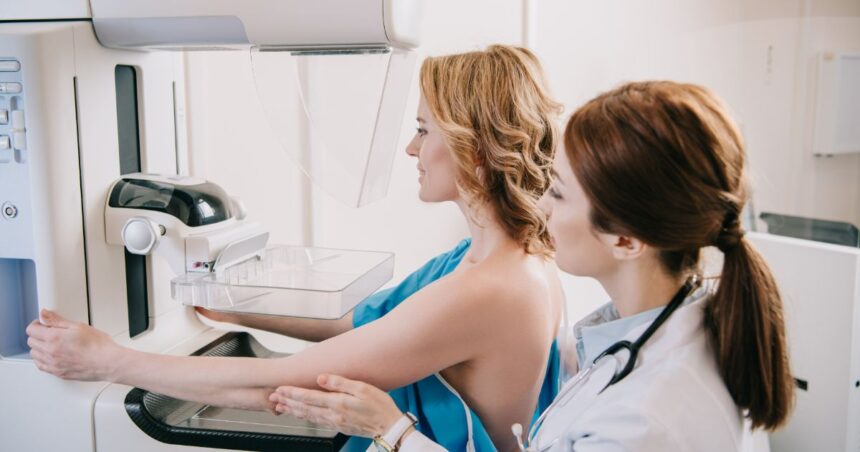If your doctor recommended a mammogram or breast ultrasound, you might wonder which one you need and why. Both tests look at the inside of your breasts, but they do it in different ways and for other reasons.
We’ll walk through what each one does, why your doctor might recommend it, and how they work to keep you healthy. If you’re unsure, overwhelmed, or just curious, you are in the right place. Our goal is to explain things so you can walk into your appointment feeling calm, confident, and informed.
What Is a Mammogram?
A mammogram is a special X-ray that takes pictures of your breast tissue. It helps doctors find lumps, changes, or signs of breast cancer—even before you feel anything.
There are two types:
- Screening mammogram – for people who don’t have symptoms but want to check for problems.
- Diagnostic mammogram – for people with symptoms like a lump or pain.
Mammograms can spot tiny spots of calcium (called microcalcifications) or changes in breast shape that may be signs of early cancer.
What Is a Breast Ultrasound?
A breast ultrasound uses sound waves to make pictures of the inside of your breast. It doesn’t use radiation. Instead, it sends sound into your body, and the echoes create an image on a screen.
Ultrasounds are often used to:
- Look closer at a lump found in a mammogram or physical exam
- Tell the difference between a solid lump and a fluid-filled cyst
- Help guide a needle for a biopsy
They’re safe, painless, and can be done quickly.
Key Differences Between Mammograms and Ultrasounds
Here’s a simple breakdown of how these tests are different:
- How they work:
- Mammogram uses X-rays.
- Ultrasound uses sound waves.
- What they’re best for:
- Mammograms are better at finding early signs of cancer.
- Ultrasounds are better at checking specific lumps or cysts.
- Radiation:
- Mammograms use a low dose of radiation.
- Ultrasounds don’t use any radiation.
- Comfort level:
- Mammograms require gentle breast compression.
- Ultrasounds use a handheld device with gel—no squeezing.
When Do You Need Each Test?
Depending on your age, breast type, and symptoms, your doctor might have you do one test or both. Here’s a general guide:
- Mammograms are the go-to test for routine breast cancer screening, especially for women over 40.
- Ultrasounds are often used to follow up on a finding or check something specific that showed up in a mammogram.
- Younger women or those with dense breast tissue might need both.
Which One Is Right for You?
The best test depends on what your doctor is looking for. A mammogram is usually the first step if you’re just doing a regular check-up and have no symptoms. If you’ve found a lump or the mammogram shows something unusual, an ultrasound helps give more detail.
Always talk to your doctor about any concerns. They will explain what’s right for your body and health.
Conclusion: Both Tests Help Keep You Safe
Both mammograms and breast ultrasounds are great tools for doctors to care for breast health. Mammograms are great for finding small changes early, while ultrasounds are better for taking a closer look at lumps or cysts. One isn’t better; sometimes, doctors use both to get the whole picture.
Understanding what each test does and why it’s being used can help you feel more confident, less anxious, and better prepared. These tests are part of catching problems early, when they’re often easier to treat. That’s why regular checkups and screenings matter; they can help you stay ahead and take control of your health.

